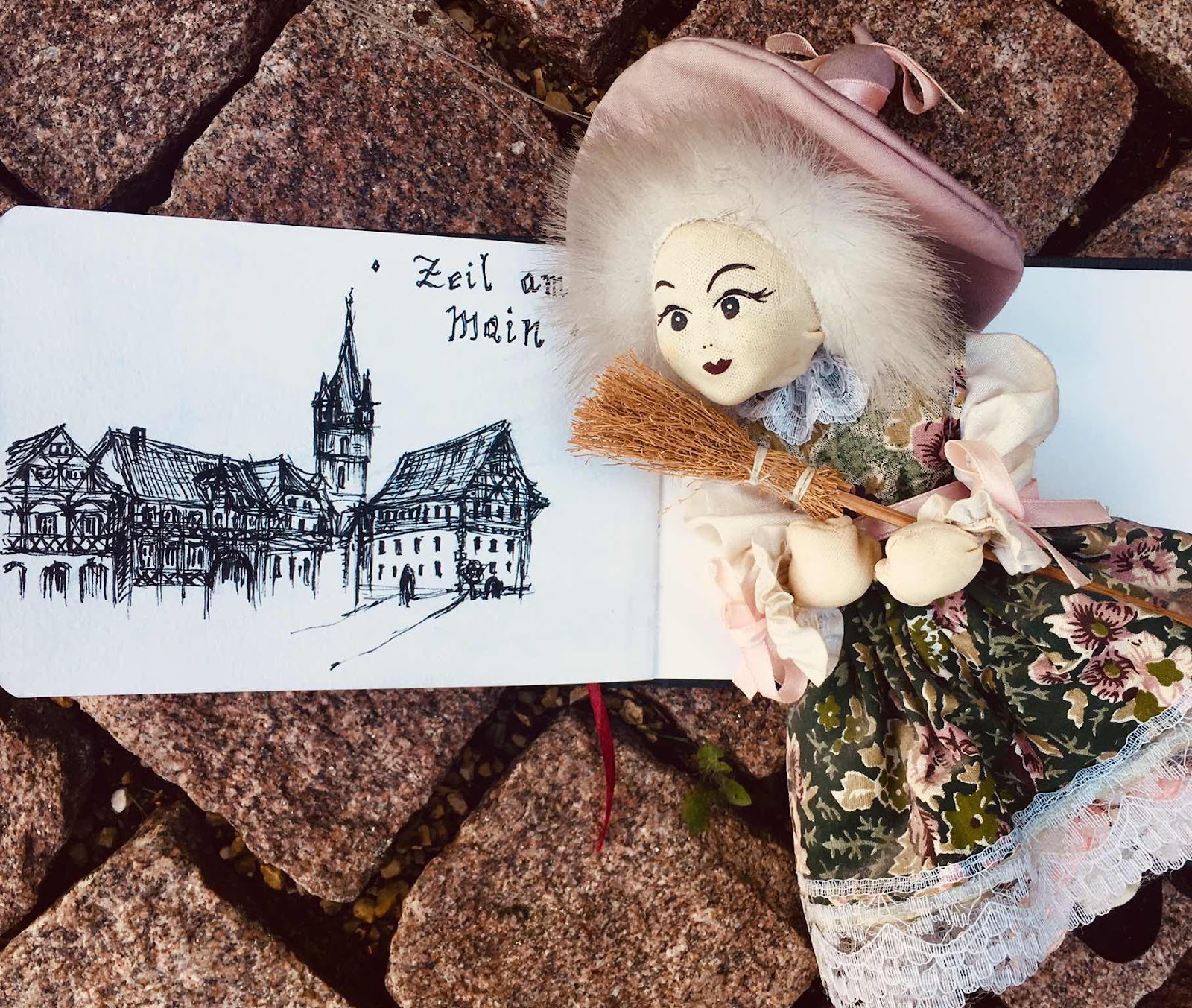Burning Ambition
These little witch dolls are a popular souvenir of a trip to Franconia, cute in pastel tones but sweet as they are they are a momento of the burning ambition of the Prince Bishops of Würzburg and Bamberg!





This little sketch is of Zeil am Main, an idyllic town in Franconia, it’s market square has remained virtually unchanged since the Middle Ages!
Zeil is famous for its Franken wine and for burning witches! As an exclave of the Bishopric of both Bamberg and Würzburg the town became the centre of the witch burning trade in the 17th C. In my post “Bamberg’s Dark Secret” https://clartyfingers.blogspot.com/2018/08/bambergs-dark-secret.html I went into the background of the Franconian witch hunts which reached a pinnacle between 1616 and 1631;the backlash of the Reformation, war, failed harvests and climate change being responsible for the horrendous tragedy and estimated deaths of at least 2200 people in Würzburg and Bamberg.
This innocuous tower is the so-called ''Hexenturm” (witch tower), where those accused were incarcerated, tortured and then removed to their place of execution on the outskirts of the town. The tower was one of approximately 25 on the town walls and could only be accessed from the battlements, the unfortunate victims were then lowered into an “Angstloch” (a fear hole) 9.5m down into the depths of the tower, into darkness and uncertainty. To quote Dante's famous words from The Divine Comedy, “abandon hope all ye who enter here”, there was little or no hope when you were transported to Zeil.
Not only were accused witches from Bamberg and Würzburg brought here, the witch hunts also involved locals, culminating in the execution of Johannes Langhans the mayor of the town in 1628. The witch tower is now contains documentation about the witch hunts and you can view the hole into which the accused were lower. Johannes Langhans diary can be read and it gives an interesting insight into the failed harvests, frozen wine and the burning of those unfortunates who were believed to have caused the disasters.
In my sketch there are also some “green men” which were carved into a facade dating from those dark ages, an interesting pagan symbol indicating how folk belief has always gone hand in hand with religion. In the dark days of the witch hunts a simple charm or talisman could however cost you your life, I was left wondering whether my German family from Bamberg was also touched by the horrors of the witchcraft trials.
This plaque shows the date 1617 and initials HR scratched into the wall, Rochus Hofmann was executed along with his daughters one of them called Kunigunda Hofmann the name of our great grandmother. The names of at least 600 are known to have lost their lives in Zeil and can be read on a cross on the wall of the tower.
Considering how many people were executed and the size of the population at around that period it probably would be a surprise if my family weren’t touched by the hand of fate. The burning ambition of but a few ruined the lives of so many.
Comments
Post a Comment